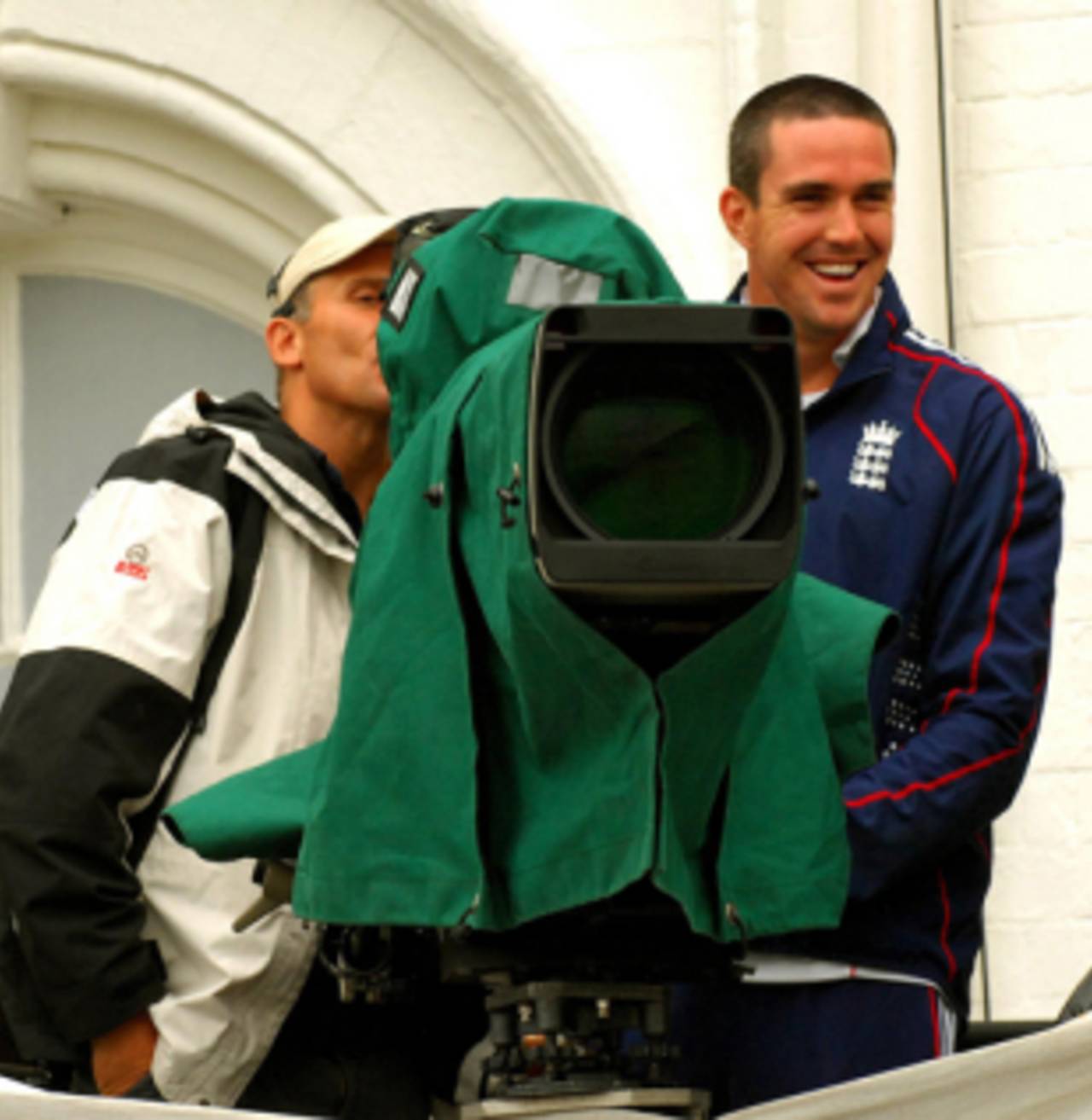The tentacles of TV
Sky's much lauded coverage now extends to seven sports in 3D in addition to acting virtually as an extra umpire in cricket
Ivo Tennant
01-Mar-2011

TV cameras are ubiquitous at cricket matches in the modern day and age • PA Photos
Down the years, one of the few pleasures to be obtained from watching a rain-affected Test match on television was to see grainy black-and-white BBC footage of Fred Trueman in his pomp. The sweaty mane of hair, the distinctive run-up, the classical, tremulous action. The reaction of a batsman confronted by a genuinely great fast bowler.
Or was he? The raw camera work of the early sixties was such as to make Trueman out to be little more than military medium. No one would have dared to have said that to his face, of course, but some modern-day cricketers thought as much. A great shame, then, that his bristling, his pace, his manifest ability, could not be highlighted in 3D, as 50 years later would have been the case.
Sky's much lauded coverage now extends to seven sports in 3D, in addition to acting virtually as an extra umpire in cricket. Viewers expect nothing less. To think that when cricket coverage was revolutionised by World Series in 1977, they complained they were disorientated by looking down the pitch every over. "Who wants to watch a batsman's bum for half the match?" Kerry Packer had said to his production team. Clearly not him, for he installed cameras behind the arm at both ends of the ground.
Soon to be gone forever were camera shots of the bums of everybody - wicketkeeper, slips, leg slip and all. Once again, Packer had changed the game. He was to do so, too, through the introduction of stump microphones, although even he, in spite of his desire to make cricket a gladiatorial contest, baulked at picking up expletives on the field of play. An initial lack of sophistication resulted in the viewer hearing too much scratching around by the batsman at the crease, but there was no doubting mics would become a part of the game.
Along with the advent of enhanced technology came extensive intrusion. At the notorious Test in Faisalabad in 1987, Mike Gatting could be heard saying, in reference to the umpiring, "one rule for one, one for another". The convention was that the stump mics were turned down between deliveries, but Pakistan Television - conveniently? - recorded the utterances of the England captain on this occasion.
Such intrusion also highlighted the drivel talked by the wicketkeeper as a supposed means of encouragement to his side. Alan Knott never had to utter a word to inspire a bowler - his performances were quite sufficient - but we were now into an age when there was too much chat around the bat. If stump mics provided any kind of service, it was to ensure fielders would have to watch what they were saying.
In fact they did more than that. In 2004 umpires were fitted with earpieces linked to stump mics in an experiment with technology-guided decision making. At the Champions Trophy, on-field officials were relieved of the need to watch for foot-fault no-balls, which instead became the responsibility of the third umpire, using a TV monitor. The measures were to help umpires make correct judgements over contentious lbws or catches when there was some doubt over whether the bat had hit the ball.
Further decision-making would be supported by Hawk-Eye and the Snickometer. Ralph Dellor, the commentator, compares the need for the assistance of cameras at cricket matches with photo finishes at horse racing. "Is it better to have a couple of old buffers or a photo finish to decide who won?" he said. "I am not sure about the fallibility of technology, but I am sure about human fallibility."
The range of equipment, upgraded to HD in 2006, that is used by Sky Sports at an international match is mind-boggling - as is the expense. There are more than 30 cameras, including one in the commentary box, and stump cameras, which were introduced in 1991. This number is increased for 3D coverage. There are more than 40 microphones in use, plus 15 miles of cabling, an on-site production crew of 80, with 15 trucks, which arrive at the ground in question two days before the start of play. The director's truck, the largest vehicle permitted on roads in Britain, includes 78 screens. De-rigging takes around four hours.
At Sky's west London headquarters, live interactive coverage is produced. Think of the other innovations: virtual graphics, ultra motion, hi motion, Hot Spot, field plan and pitch cam, and it can be deduced that the omnipresent eye of television has rendered the ball-tamperer and dodgy catch just about redundant.
This is the sixth article in a series on cricket's innovations, sponsored by SAAB. Next week, the advent of Twenty20 cricket